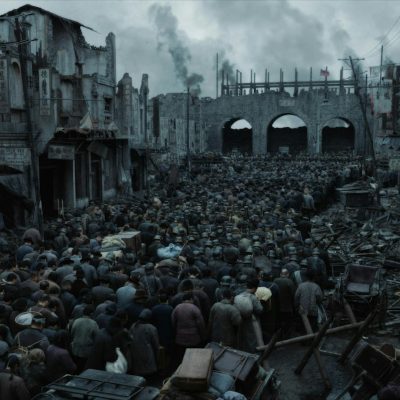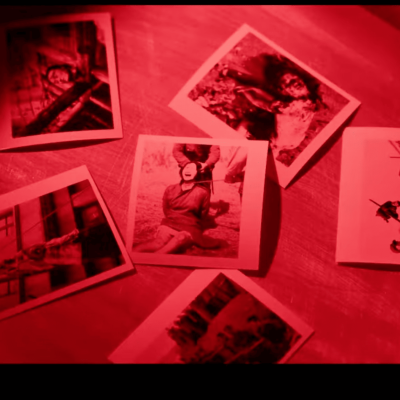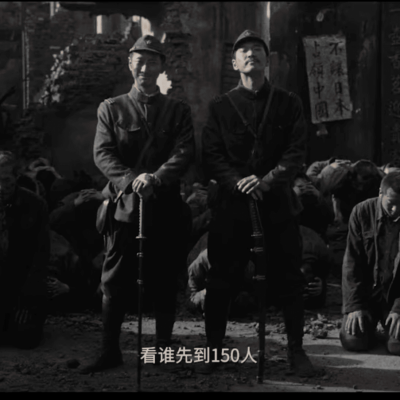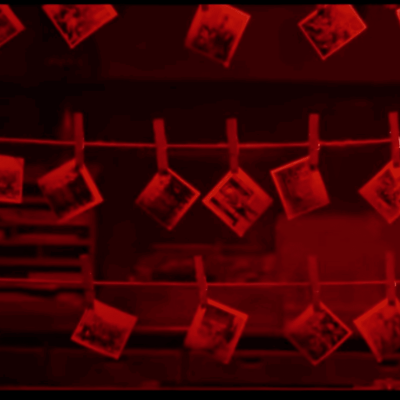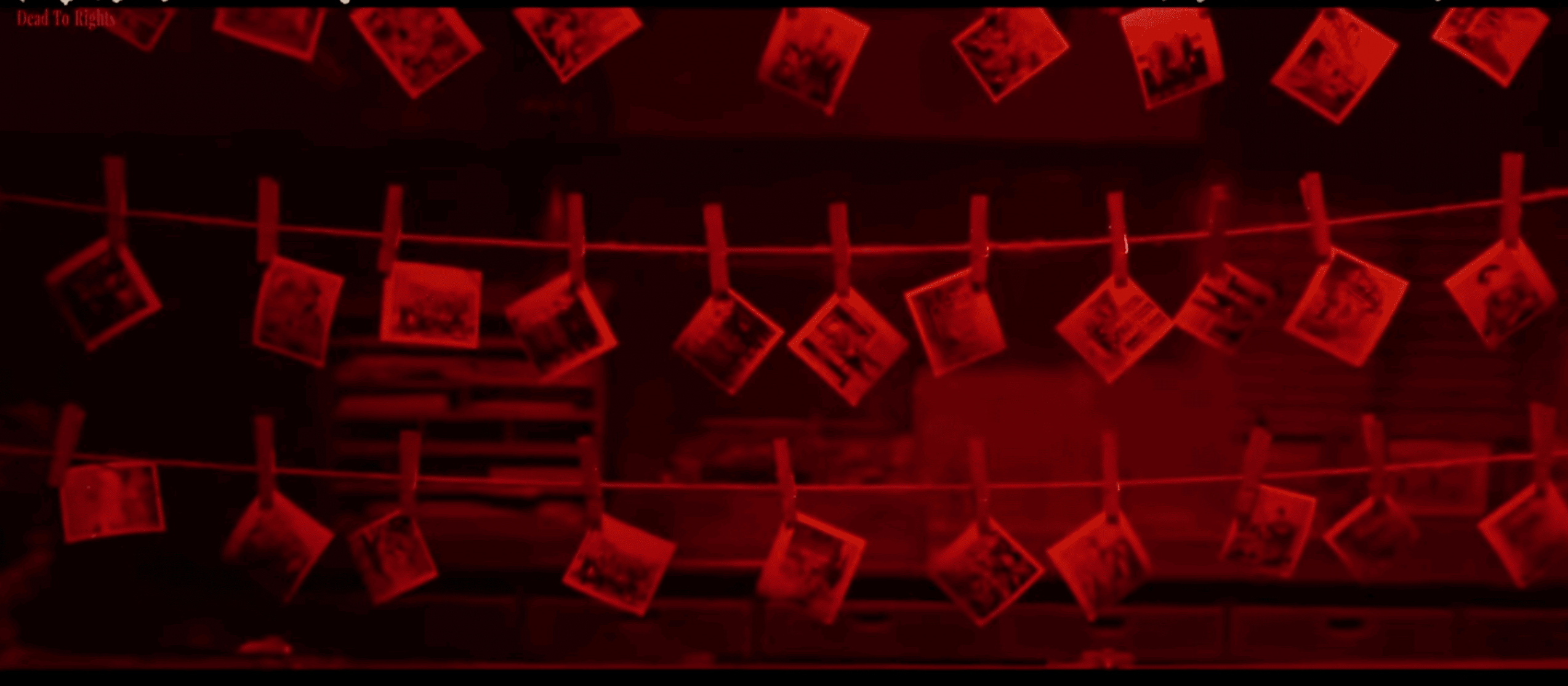
From 5 to 11 September 2025, Dead to Rights *1 will screen across multiple UK cities. Centred on a modest photo studio, the film intertwines the brutality of Nanjing in 1937 with the testimony of images. For British audiences, this history does not belong to the familiar landscapes of the Second World War; it appears instead as a hazy, under-told void. Why has Auschwitz been inscribed again and again in the global register of public memory, while the wounds of Nanjing so often remain at the margins? This ‘disparity’ is not accidental but the outcome of historical and political negotiations within an international arena.
It is precisely for this reason that Dead to Rights strikes so powerfully: in the red-lit hush of the darkroom, negatives slowly reveal themselves. They remind us that images are never mere records of a moment past. They are witnesses and indictments—quiet traces pressed into the crevices of forgetting. Through its UK screenings, this article takes the film as an entry point to ask why the Nanjing Massacre has long occupied the periphery of global remembrance; and further, to consider how the ‘image’—that silent negative—creates tension between appearance and erasure in the narratives of war.
This essay unfolds in three movements: first, the gap in global memory; second, the paradox of war and the image; and third, how Dead to Rights renders presence through silence.
The Gap in Global Memory
Not every atrocity enters public memory. Memory is never a simple archive of facts; it is a construct, shaped and sifted through political and economic forces. As cultural memory studies reminds us, cultural memory always entails ‘selective preservation and forgetting’: what is repeatedly inscribed, and what quietly slips from view, depends on the needs of power. *2
Auschwitz has been secured as the ethical lodestone of Western public memory, the emblem of humanity’s reckoning with atrocity. This is not only because of the horror of its crimes, but because it became enmeshed in the reconstruction of the post-war order. Germany’s continual admissions of Nazi guilt and its painful acts of remembrance were the price of re-entry into the international community. Israel, meanwhile, inscribed the catastrophe into its national narrative—at once a claim to legitimacy and an indelible marker of identity. *3
Equally crucial was the role of the United States, which—though spared a battlefield at home—became central in reshaping global memory after 1945. As Peter Novick observes in The Holocaust in American Life, the ‘universalisation’ of Holocaust memory in the US was not spontaneous but gradually forged in the Cold War, recast as a moral compass distinguishing ‘civilisation’ from ‘barbarism’.*4 Through this prism, the Holocaust acquired new political function: it was no longer only a tragedy of history, but a moral signifier. To remember Auschwitz was to align oneself against tyranny and genocide, a stance that underscored America’s self-image as the guardian of the free world and furnished it with potent political capital in the struggle against the Soviet Union. The memory of Auschwitz, then, was never inevitable—it was fashioned at the nexus of history and power, a name invoked again and again.
Yet political frameworks alone do not convert narratives into public memory. Mediation is required; images, above all, become the carriers. Jeffrey Alexander has argued that for trauma to enter collective consciousness, it must be borne by ‘carriers’ who continually narrate and disseminate it. *5 Images serve as one of the most forceful of such vehicles. From still photography to cinema, they not only preserve the past but shape how it is understood. With the growth of the culture industries, Auschwitz became a towering marker in global memory precisely because it was continually reproduced by Western film industries. Hollywood and the European market provided a powerful narrative machinery and global circulation, ensuring that the camps remained present in the cultural imagination. From Schindler’s List (1993) to Life is Beautiful (1997), from The Pianist (2002) to The Zone of Interest (2023), acclaimed films returned time and again to the camps, pushing these images into intergenerational circulation and reaffirming their place at the forefront of global discourse. Images do not simply preserve memory—they shape the very ways in which memory is apprehended. *6 Political power may decide whether an event is remembered; images decisively influence how it is remembered.
In stark contrast, on the other side of the globe, the Nanjing Massacre remains blurred and marginal within global remembrance. The Cold War context that universalised Holocaust memory simultaneously allowed Japan, as an American ally, to inhabit another narrative frame—its wartime responsibility diluted in international discourse. Nanjing has long been treated as a ‘regional incident’, lingering on the periphery. Scholars have noted that the Tokyo Trial, constrained by political compromise, left many key perpetrators unpunished, effectively blunting Japan’s accountability in global memory. *7
When we probe the loss of memory, we inevitably return to the question of images. Visual testimony has become our chief means of grasping war, yet it was precisely what Nanjing most lacked. Few images survive, and most were taken by Japanese soldiers. More fundamentally, China lacked for decades the conditions to translate its trauma into global visual discourse: a nascent film industry, limited international reach, and few avenues for circulation in world markets. Without the machinery of cinematic reproduction, Nanjing could not be reinscribed again and again as Auschwitz was. Although domestic research and narrative on the massacre have flourished in recent decades, its visibility within global memory remains faint, like a wound not yet truly seen.
In the late 1990s, Iris Chang’s The Rape of Nanking: The Forgotten Holocaust of World War II (1997) briefly broke this silence in the West. The book thrust the massacre into public view, generating rare resonance. *8 Yet the reverberation did not crystallise into ongoing cinematic reproduction or secure a place in humanity’s shared coordinates of remembrance. It was an echo—sudden, powerful, but soon fading. Thus we glimpse how disparities in global Holocaust memory arise not only from political construction but also from uneven development of media industries. Images are not simply records; they are tickets of entry into the atlas of global memory.
The Paradox of War and the Image
When it comes to war, the issue is never simply one of ‘absence’ or ‘scarcity’ of images. Even when images of war are everywhere, they cannot deliver a single truth. For war, ‘truth’ is itself a fragile and overburdened word. Images hover instead like phantoms—half-light, half-shadow—circling the borders of preservation and oblivion, testimony and risk.
The paradox is always there: images can preserve history even as they efface it; they can bear witness to trauma even as they are consumed or co-opted. A photograph, at the instant of exposure, seems to be a neutral record. Yet in the unfolding of history, it may become irrefutable testimony. Images bring flesh and rubble before distant eyes, making atrocity harder to erase. But their power cuts both ways: they can give voice to the silenced, or be drawn into new frames of power. Holocaust memory in the Cold War was not only testimony; it was also political currency. Within Hollywood’s industrial logic, images of atrocity could be packaged into award-winning spectacles. Witnessing and consumption, remembrance and manipulation—these tensions are braided together in the very fabric of the image.
Susan Sontag argues that war photographs force us to confront suffering, yet through repeated viewing they may lose their edge. *9 Images are not inert copies: they are subjected to endless gazes, dulled through repetition; they are woven into narratives that highlight certain fragments while concealing more complex dimensions; and they always carry a structural lack—the countless moments never captured, forever dissolved in the shadow of history. Auschwitz embodies this paradox: post-war photographs and film reels compelled the world to face the camps’ ruins and corpses, yet almost no images of the gas chambers in operation exist. That very absence becomes a form of testimony: it confronts us with the unrepresentable wounds of history, and with the weight of cruelties that cannot be seen.
This absence extends beyond Auschwitz, haunting Nanjing and wartime China. Japan’s atrocities in China left scant photographic record; the images we have are often from Japanese soldiers’ lenses. The crimes of Unit 731, for example, rely largely on survivors’ voices and post-war archives. *10 Countless unrecorded moments, uncounted names, simply vanished into the mist of history. It is here that Dead to Rights finds its urgency. Its significance does not lie in ‘filling the archive’ but in acknowledging and embodying absence itself—making silence resound in the red glow of the darkroom.
If some atrocities have been forgotten for want of images, our present moment is almost the inverse. With smartphones and social media, images no longer recede but proliferate. War’s cruelty floods our screens through short clips and live streams, appearing to make pain instantly visible—yet also swiftly consumed. From Syria to Ukraine, from Gaza to the small rectangles we hold in our hands, images surge with unprecedented speed and volume. They promise evidence but also create confusion, deception, and exhaustion. In Ukraine, footage from video games has been passed off as front-line images. *11 During the Gaza conflict, AI-generated photos of ‘weeping children’ spread widely on social media. *12 On TikTok, some users recycle old battle footage or training exercises, overlay fake explosions, and present them as ‘live’ war streams—soliciting donations once enough viewers are drawn in. *13 These images long ago slipped beyond witness: they may serve as proof, as falsehood, or as commodities in the economy of attention.
Short videos and algorithmic feeds make distant cries feel close, yet in the flick of a finger suffering can be flattened into content. War’s cruelty seems ‘seen’, but not truly ‘felt’. The memory borne by images is always selective, always fragile. Images reveal history, but they also allow history to fade elsewhere; they serve as testimony, but also as evidence that forgetting is still at work. In this paradox and tension, images ceaselessly ask us: which forms of pain will be remembered, and which wounds will be consigned to silence?
Dead to Rights: Rendering Presence through Silence
Returning to Dead to Rights, the darkroom becomes its central metaphor — a space that stands in sharp counterpoint to today’s torrent of images. On the cinema screen, negatives emerge slowly in the hush of red light, speaking of history with restraint and gravity. On our digital screens, by contrast, images erupt endlessly — fast, saturated, and disposable. One is a silent act of development; the other, memory dissolving in noise.
The film draws us back into the carnage of Nanjing in 1937, but also into reflection: images may preserve memory, yet they may just as easily erode it. As Sontag reminds us, images can ignite the conscience, but under the pressure of repetition they can also dull it. They can pierce indifference, but they can also be consumed to the point of exhaustion. The memory of Nanjing differs from Auschwitz precisely because it has never been endlessly reproduced, recycled, and or absorbed into the machinery of global cultural industries. The massacre’s images remain sparse, fragile, and urgent — not yet dulled by familiarity, but demanding recognition.
Absence itself, the film suggests, possesses its own kind of force. It reminds us of wounds still unseen, of histories yet to be developed into view. The darkroom is not only a setting but a symbol: within its confined space, under the glow of red, negatives rise from obscurity, each shutter-click and each blurred photograph bearing mute witness to an unerasable horror. This slow emergence of the image asks us difficult questions: Who is remembered? Who is forgotten? How do we confront war and history through the medium of images? And crucially: are we willing to inscribe Nanjing into the world’s atlas of memory?
Perhaps the true ‘development’ does not lie in the negative itself, but in our willingness to acknowledge histories still absent, and to admit them into our common memory. If Auschwitz has become the West’s moral compass, then the images of Nanjing remind us that humanity’s map of remembrance remains incomplete. Dead to Rights offers not closure, but an attempt to reassemble — a call to confront the missing pieces of our shared past.
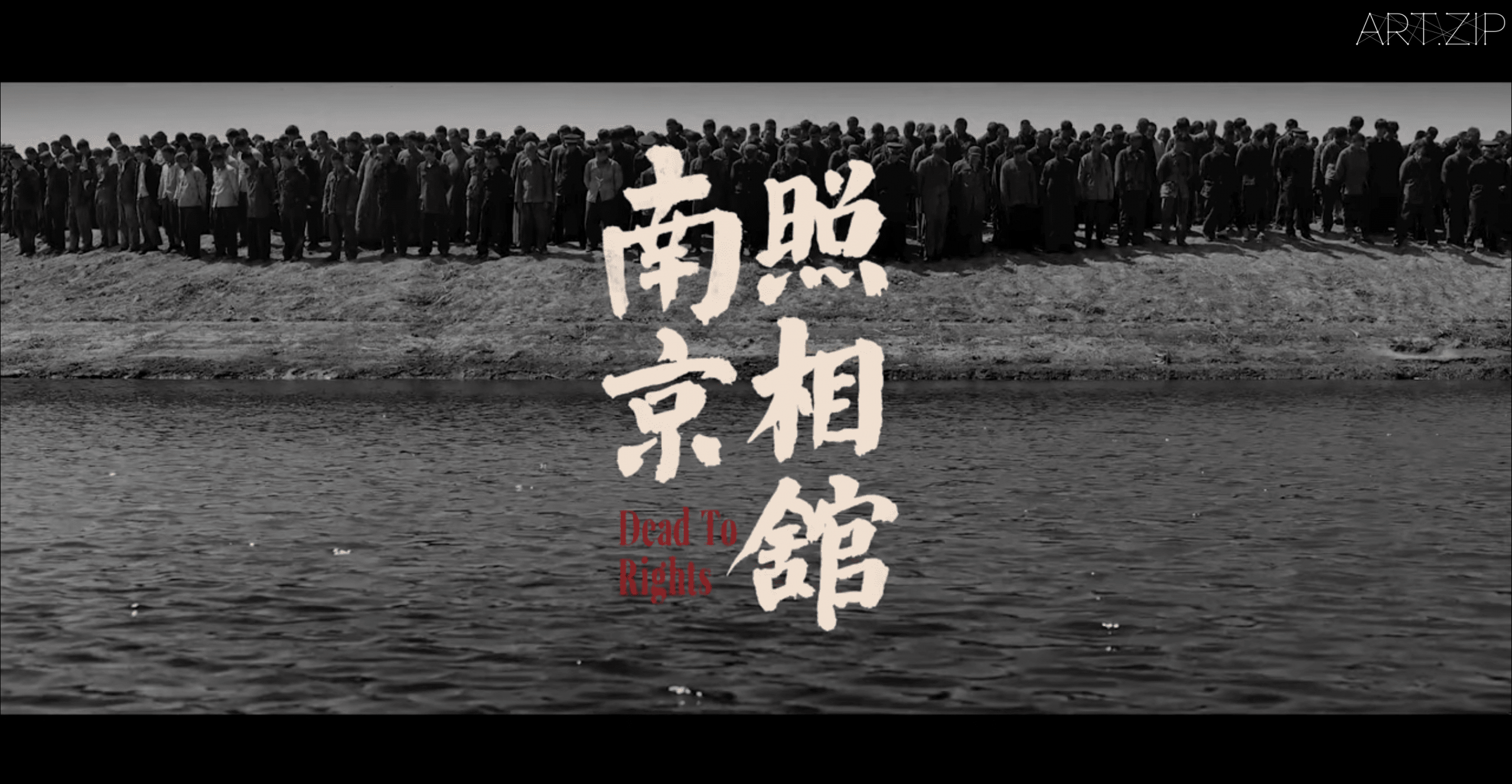
2025年9月5日至 9月11日,《南京照相館》(Dead to Rights)*1 將在英國多個城市上映。影片以一間小小的照相館為敘事核心,將1937年南京的殘酷與影像的見證交織在一起。在英國觀眾的二戰記憶中,這段歷史或許不是被反復銘刻的場景,而是一片始終模糊、尚未得到應有敘述的空白。為何奧斯維辛的苦難能夠在全球公共記憶中被反復銘刻,而南京的傷痛卻常常徘徊在邊緣?這段全球公共記憶間的「落差」並非偶然,是歷史與政治在國際語境中博弈與同塑的結果。正因如此,《南京照相館》才顯得格外動人:在紅光包裹的暗房裡,底片緩緩顯影,它們提醒著我們,影像並非只是對歷史瞬間的記錄,它們更是一種見證和控訴——在遺忘的罅隙中克制而沉靜地留下痕跡。藉由影片在英國放映,本文願以之為切入口,追問南京大屠殺緣何在全球記憶中長期處於邊緣;並進一步思索,「影像」這張無聲的底片,在戰爭敘事里如何在顯影與消影之間展開張力。本文將從三個方面展開:其一,全球記憶的落差;其二,戰爭與影像的悖論;其三,《南京照相館》如何在沉默中顯影。
全球記憶的落差
並非所有的戰爭慘劇都會自然而然地進入公共記憶。記憶,從來都不是單純的事實歸檔,而是由政治與經濟力量篩選、建構出來的產物。正如文化記憶研究提醒我們的那樣,文化記憶的形成總伴隨著「選擇性的保存與遺忘」:哪些事件被反覆銘刻,哪些事件被悄然忽略,往往取決於社會與權力的需要。*2
奧斯維辛已被確立為西方公共記憶中的倫理坐標,成為人類反思暴行的核心象徵。這不僅因為其殘酷程度令人發指,更因為它被納入了戰後秩序重塑之中。德國通過不斷的承認納粹罪行、沉痛反思歷史,換取了一張重新被國際社會接納的入場券;以色列,則將這段慘烈的經歷銘刻進建國敘事,既作為國家合法性憑據,也在民族身份中留下無法磨滅的印痕。*3 更重要的是,二戰中的美國儘管沒有本土戰場,卻在戰後全球記憶的重塑中扮演了關鍵的一角。彼得·諾維克指出,大屠殺記憶在美國的「普世化」並非自然而然,而是在冷戰語境中逐漸被塑造成「文明與野蠻」的分界線。*4 在這一格局下,美國努力將自身塑造成「文明與自由世界的代表」,而把蘇聯描繪成「極權與野蠻的典型」。大屠殺因而獲得了新的政治功能:它不只是歷史的慘劇,更成為一個強有力的道德符號。銘記奧斯維辛被順理成章地與反對極權、反對種族滅絕畫上等號,既標識了美國「站在文明一邊」的立場,也為美國在冷戰中對抗蘇聯提供了重要的政治資本。歷史固然自有其沉痛,但奧斯維辛的銘記,從來不是純粹的歷史必然,而是一種政治力量塑造的結果——一個在歷史與權力的交織中一次又一次被呼喊的名字。
奧斯維辛之所以能夠成為全球記憶的座標,離不開國家層面的政治賦形,但政治敘事並不會因此而自動轉化為公共記憶。它需要依靠媒介的傳播、視覺化,才得以有機會被納入集體記憶之中。傑弗里·亞歷山大論證了創傷要進入集體意識,必須依賴「承載者」去不斷敘述與傳播。*5 影像,正是種種媒介中最有力的載體之一。從照片到電影,他們不僅保存著歷史,也塑造著人們理解這段歷史的方式。隨著文化工業與影像市場的發展,可以說,奧斯維辛成為全球記憶里高聳的座標,全然離不開西方成熟的電影工業。好萊塢與歐洲電影市場提供了強大的敘事機制與傳播渠道,一次又一次重申著這段歷史在全球記憶中的地位。從《辛德勒的名單》(Schindler’s List, 1993)到《美麗人生》(Life is Beautiful, 1997),再到《鋼琴家》(The Pianist, 2002),一系列在國際舞台屢獲殊榮的影片,使得集中營的景象一次又一次的闖入公眾視野,成為跨代延續傳播的集體記憶。直至近年的《利益區域》(The Zone of Interest, 2023),又以冷峻的手法重返奧斯維辛的場域,繼續將這一記憶推向全球話語的前沿。影像的再現不僅保存了記憶,也在無形中塑造了我們理解記憶的方式。*6 也就是說,政治權力或許決定了這段歷史「是否被記住」,而影像則深刻地決定了它「如何被記住」。
然而,在地球的另一端,與奧斯維辛的銘記形成鮮明對照的,是南京大屠殺在全球記憶中始終模糊和邊緣化的處境。如我在前文所言,冷戰格局固然使大屠殺的記憶在美國的敘事中被塑造成衡量文明與野蠻的道德座標。但與此同時,日本因同盟身份而被置於另一種敘事框架,它的戰爭責任在國際記憶中被不斷稀釋。南京大屠殺長久以來僅被視為「區域性事件」,在國際敘事里徘徊於邊緣。有學者指出,東京審判在政治妥協下範圍受限,許多關鍵責任人未受追究,這使得日本的戰爭責任在全球記憶中被有意淡化。*7
而每當我們試圖追問記憶的失落,最終仍不得不回到影像。影像已經成為我們重新理解戰爭的重要憑據,卻也是南京最為匱乏的資源。令人唏噓的是,南京遺存的影像資料本就寥寥,且大多出自日軍之手;而更為關鍵的是,中國在很長一段時間里,缺乏將這段歷史創傷轉化為全球影像話語的渠道與條件:電影工業發展滯後,國際傳播力量有限,使得南京影像始終難以在世界電影工業與市場中獲得流通與循環的機會。於是,南京大屠殺無法像奧斯維辛那樣,在影像工業的再生產中一次次被喚起、被銘刻。儘管近些年來,南京大屠殺在中國本土已有豐富的研究與敘事,但在全球記憶的版圖上依舊能見度甚低,彷彿一段尚未被世界真正看見的傷口。上世紀九十年代末,張純如的著作《南京大屠殺:被遺忘的二戰浩劫》(1997)一度讓這段沉默的歷史在西方輿論場中獲得罕見的回響。這本書讓南京大屠殺第一次進入了西方公眾的主流視野。*8 然而,這樣的回響未能沉澱為穩定的影像再生產,也未能真正鐫刻進人類共同記憶的座標系,它只是一聲驟然而至的回響,在歷史的長河裡轉瞬消散。由此,我們窺見這種關於大屠殺的全球記憶的落差,不僅是政治力量建構的產物,更是媒體工業發展不平衡所留下的裂痕。影像,並非只是記錄歷史的方式,它更是進入全球記憶版圖的一張「入場券」。
戰爭與影像的悖論
然而,影像之於戰爭,從來也不是「缺席」或「不足」的問題。即便戰爭影像充盈到無所不在,它們也無法抵達某種單一的「真相」;或者說,對於戰爭而言,「真相」本就是一個過於魯莽而蒼白的詞。影像更像是在光與影之間徘徊的幽靈,始終游走於「保存」與「遺忘」的邊界,在「見證」與「風險」的矛盾中周旋。
戰爭與影像之間總潛伏著這樣一種微妙的悖論:它們既能保存歷史,也能消解歷史;既能見證創傷,也能被消費和操控。影像在快門按下的那一刻似乎只是單純的記錄,卻在歷史的流轉中成為無法推翻的證詞;它們讓遠離前線的人看見血肉與廢墟,也讓暴行難以掩蓋和抹去。然而,戰爭與影像的關係是兩面的:既可以為沉默者發聲,也可以被權力收編進新的敘事框架。比如說,在冷戰語境中,大屠殺記憶被塑造成政治對抗的籌碼;在好萊塢的工業邏輯里,它又被包裝為能贏得獎項與市場的敘事奇觀。見證與消費,記憶與操控,在影像之中糾纏。這種雙重性,正是影像最難以回避的悖論。
蘇珊·桑塔格指出,戰爭照片迫使我們直面他人的痛苦,但在反復凝視之後,也可能讓痛苦失去鋒芒。*9 因為影像並非單純的複製:它們被不斷觀看,因而在反復的日常化中變得遲鈍;它們嵌入敘事當中,在強調某些片段的同時掩蓋了更複雜的面向;它們還帶有先天的缺憾——那些無數未被記錄的瞬間,注定消散在歷史不可見的陰霾之中。奧斯維辛的影像恰恰體現了這種悖論:戰後新聞照片與電影記錄讓世人第一次直面集中營的廢墟與屍骸,但與此同時,毒氣室的運作幾乎沒有影像遺存,這種缺席本身反而構成另一種見證:它讓我們直面歷史中那些無法被看見、無法被再現的創傷。它也提醒我們,有些殘酷恰恰因為無法被看見而更顯沉重。
這種缺席不僅存在於奧斯維辛,同樣體現在南京和二戰時的中國大地上。日本在中國的許多暴行鮮有影像留下,南京的照片多由日軍士兵拍攝,731 部隊的罪行更主要依靠幸存者證詞與戰後檔案拼接。*10 無數未被拍攝的瞬間、未被統計的姓名,就這樣消散在歷史的陰霾中。正因如此,《南京照相館》的意義並不在於「補全影像」,而是在承認與呈現這種缺席,讓這震耳發聵的沉默在暗房紅光中重新顯影。
如果說,有些暴行因未有「影像」留存而在全球記憶中長期淡忘,那麼當今社會則幾乎處在另一端。隨著手機與社交媒體的發展,影像不再缺席,反而無所不在。戰爭的殘酷以短視頻、實時直播的方式不斷湧入屏幕,痛苦似乎被即時「看見」,卻也在算法和流量邏輯中被迅速消費。從敘利亞到烏克蘭,從加沙到我們手中的每一塊屏幕,影像正以前所未有的速度與規模肆意湧現。它們為戰爭提供了即時的「證據」,卻同時讓我們陷入真假難辨與過度消費的困境:烏克蘭戰場上,曾有人用電子遊戲畫面冒充前線影像;*11 加沙衝突中,AI 生成的「哭泣兒童」照片一度在社交媒體廣泛傳播;*12 在 TikTok 上,用戶甚至將烏克蘭戰爭片段當作娛樂或刺激內容觀看——有的「直播」用舊戰爭視頻或軍事演習畫面,配上偽造的爆炸音效,一旦聚集足夠觀眾便要求打賞。*13 這些影像早已超越了見證本身,既可能是證據,也可能是謊言,更可能淪為流量的武器。
短視頻與社交媒體看似讓「遠方的哭聲」觸手可及,在算法的精密編排與手指的輕點與滑動之間,痛苦也可能轉化為流量的一部分。戰爭的殘酷似乎「被看見」,卻往往難以真正「被感受」。影像所承載的記憶總是選擇性的,也是脆弱的。它讓歷史顯影,卻也讓歷史在另一處暗影中淡去;它既是見證的鐵證,也是遺忘悄然在場的證物。正是在這種矛盾與張力中,影像不斷追問我們:究竟怎樣的痛苦會被銘記,怎樣的創傷又將被遺忘?
《南京照相館》:在沉默中顯影
回到影片《南京照相館》,片中那個尤為重要的暗房,一個與當下社交媒體洪流形成有趣對照的空間。在影院的螢幕上,底片在紅光里緩慢顯影,影像以克制而沉靜的方式訴說著歷史。而在今天的屏幕上,影像卻以另一種方式湧現——快速、泛濫、不斷被刷新。前者是歷史無聲的顯影,後者可能是記憶的在一陣喧囂中消影。影片讓我們置身於1937年南京的慘烈,也讓我們不由得思考:影像既可能拯救記憶,也可能毀掉記憶。我們今天依賴影像去理解戰爭,到底是獲得了見證的力量,還是無形中陷入了麻木?
蘇珊·桑塔格提醒我們,影像的力量終究有限,它能點燃良知的火焰,也能在反復的凝視中讓火焰趨於暗淡;影像既能刺破冷漠,也能在過度的曝光中被消費殆盡。然而,南京的影像處境卻有所不同,它從未像奧斯維辛那樣,被主流文化工業一遍又一遍地複製、轉化和再生產。關於南京大屠殺的影像甚至從未大規模地進入到全球話語體系的循環中,只是長期停留在全球記憶的邊緣,沉默著、缺席著。也正因如此,關於南京大屠殺的影像仍保有著鋒利與緊迫,它不是被麻木的對象,而是為我們打開了一個迫切的見證窗口。
缺席本身,具有一種強大的力量——它提醒我們,仍有尚未被世界充分看見的創傷,仍有某些歷史需要被重新顯影。《南京照相館》里的暗房意象,正是這一力量的象徵:在逼仄狹小的空間里,在紅光的籠罩下,底片漸漸浮現,一聲聲快門聲與一張張慘烈的照片,都在這場沉默中訴說著不可磨滅的苦難。這場緩慢的顯影,也在追問我們:誰被銘記?誰又被遺忘?我們如何通過影像去面對戰爭、面對歷史?而我們,是否願意將南京納入世界的記憶版圖?
或許,真正的顯影並不止於底片,而在於我們是否願意承認那些仍在缺席的歷史,是否敢於將它們納入我們共同的記憶。如果奧斯維辛已成為西方世界的道德座標,那麼南京大屠殺的影像則在提醒我們:人類的記憶版圖依舊殘缺,而《南京照相館》只是一次重新拼接的嘗試。
Footnote 註腳:
1. Dead to Rights (《南京照相館》, 2025) is a Chinese historical drama directed by Shen Ao and starring Liu Haoran and Wang Chuanjun. Set during the Nanjing Massacre, the film follows civilians who take refuge in a photo studio and risk their lives to develop negatives that expose Japanese atrocities. Dead to Rights(《南京照相館》,2025)是一部由申奧執導的中國歷史劇情片,主演包括劉昊然、王傳君等。影片背景設定在南京大屠殺期間,講述平民在照相館避難,並冒死沖洗底片,揭露日軍暴行的故事。
2. Aleida Assmann, Cultural Memory (2011, p.126), emphasises that the formation of cultural memory is always accompanied by “selective preservation and forgetting. 阿萊達·阿斯曼(Aleida Assmann)在《文化記憶》(2011, p.126)中強調,文化記憶的形成總伴隨著「選擇性的保存與遺忘」。
3.Tom Segev, The Seventh Million (1993), offers a detailed analysis of how Israel inscribed the Holocaust into nation-building and collective identity.湯姆·塞格夫(Tom Segev, The Seventh Million, 1993)詳細分析了以色列如何將大屠殺記憶納入國家建構與民族身份之中。
4.Peter Novick, The Holocaust in American Life (1999, p.11), stresses that the “universalisation” of Holocaust memory in the United States did not occur naturally, but was reconstructed during the Cold War as a moral boundary between civilisation and barbarism. 彼得·諾維克(Peter Novick, The Holocaust in American Life, 1999, p.11)在書中強調,大屠殺記憶的「普世化」並不是自然發生,而是冷戰時期被重新建構為文明與野蠻的道德座標。
5. Jeffrey C. Alexander, Remembering the Holocaust: A Debate (2009, p.27), argues that for trauma to enter collective consciousness, it must rely on continual narration and transmission. 傑弗里·C·亞歷山大(Jeffrey C. Alexander, Remembering the Holocaust: A Debate, 2009, p.27)論證了創傷若要進入集體意識,必須依靠持續的敘述與傳播。
6.Barbie Zelizer, Remembering to Forget (1998), reminds us that the representation of images not only preserves memory but also subtly shapes the way we understand it.巴比·澤利澤(Barbie Zelizer, Remembering to Forget, 1998)提醒我們,影像的再現不僅保存了記憶,也在無形中塑造了我們理解記憶的方式。
7. John W. Dower, Embracing Defeat: Japan in the Wake of World War II (1999), and Yuma Totani, The Tokyo War Crimes Trial: The Pursuit of Justice in the Wake of World War II (2008), both point out that the Tokyo Trial was constrained by political compromise, leaving many key perpetrators unprosecuted and thereby diluting Japan’s war responsibility in global memory. 約翰·杜維爾(John W. Dower, Embracing Defeat: Japan in the Wake of World War II, 1999)與戶谷友則(Yuma Totani, The Tokyo War Crimes Trial: The Pursuit of Justice in the Wake of World War II, 2008)均指出,東京審判因政治妥協而受限,導致許多核心責任人未被追究,從而在全球記憶中淡化了日本的戰爭責任。
8.Joshua A. Fogel, The Nanjing Massacre in History and Historiography (2000), notes that Iris Chang’s book brought the Nanjing Massacre into the Western public’s mainstream consciousness for the first time.約書亞·福格爾(Joshua A. Fogel, The Nanjing Massacre in History and Historiography, 2000)指出,張純如的著作使得南京大屠殺首次進入西方公眾的主流視野。
9. Susan Sontag, Regarding the Pain of Others (2003, p.81), emphasises that while images of war can compel viewers to confront the suffering of others, their repeated viewing may gradually dull the force of that pain. 蘇珊·桑塔格(Susan Sontag, Regarding the Pain of Others, 2003, p.81)在書中強調,戰爭影像能迫使觀者直面他人的苦難,但在重複觀看的過程中,痛苦的震撼力也可能逐漸消磨。
10. ‘Unit 731’ was a covert biological warfare and human experimentation unit established by the Imperial Japanese Army in northeast China during the 1930s and World War II, infamous for vivisection, germ warfare research, and chemical weapons testing.「731 部隊」是日本帝國陸軍於 1930 年代至二戰結束期間在中國東北設立的秘密生物戰與人體實驗部隊,以進行活體解剖、細菌戰研究和化學武器試驗而臭名昭著。
11. Alex Hern, The Guardian (2022), reported that in the context of the war in Ukraine, some circulated images were in fact video game footage passed off as frontline material. Alex Hern, The Guardian, 2022 — 報導指出,烏克蘭戰場上曾有人以電子遊戲畫面冒充真實前線影像。
12. Alex Hern and Dan Milmo, The Guardian (2023), discussed how AI-generated images of a “crying child” were widely shared on social media during the Gaza conflict. Alex Hern and Dan Milmo, The Guardian, 2023 — 討論加沙衝突期間,AI 生成的「哭泣兒童」照片如何在社交媒體廣泛傳播。
13. Bessie Wong, The Guardian (2022), reported that some TikTok users disguised old war videos or military exercise footage as live battlefield streams, using them to attract viewers and solicit donations. Bessie Wong, The Guardian, 2022 — 報導 TikTok 上用戶將舊戰爭視頻或軍事演習片段偽裝成前線「直播」,並藉此獲取打賞。
Text 撰文 x Dr Hening Zhang 張鶴寧
Edited 編輯 x Michelle Yu

